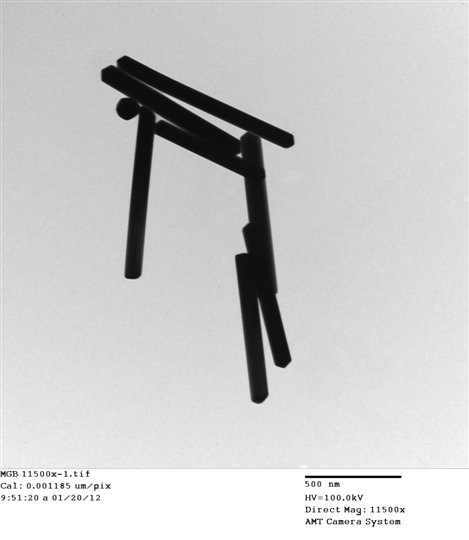All About Microgold Gold Nanoparticles
Definition, Properties and Applications
Microgold, also known as microelongated gold particles, refers to gold particles with a particle size ranging from 0.001 to 0.020 mm Li et al. (2021). These particles have garnered significant interest due to their unique properties and potential applications in various fields. The directed assembly of hybrid nanomaterials and nanocomposites has been explored, demonstrating the assembly of chains of dimers of colloidal particles and colloidal rod-like "microgold" particles localized by topological defects in liquid crystals (Zhang et al., 2018). Additionally, microgold has been utilized in gene delivery into plant cells for recombinant protein production, where the transgene is coated onto microgold particles and fired into plant cells ballistically (Chen & Lai, 2015). Furthermore, microgold has been employed in biolistics, also known as 'particle bombardment', where particles coated with DNA are used to deliver transgenes directly into diatom cells (Γρυπιώτη, n.d.).
The coupling of the optically active protein PS I to the microgold antenna localized surface plasmon resonances (LSPRs) has shown potential for novel breakthrough applications, such as the potential of this hybrid biosolid state active platform to act as a Bolean logic gate for the fast control of optical output signals from the plasmonic antenna in optic communication systems (Carmeli et al., 2023). Moreover, microgold has been used in virus host jumping studies, where microcarrier cartridges were prepared with 1.0 μm gold particles coated at a DNA loading ratio and a microcarrier loading amount (Martínez-Turiño et al., 2021).
In summary, microgold, with its unique properties and diverse applications, has been utilized in various fields, including nanomaterial assembly, gene delivery, biolistics, and hybrid biosolid state active platforms. Its potential for novel breakthrough applications makes it an area of active research and exploration.
Go here for Nanopartz Microgold
References:
(2019). Untitled. International Journal of Pharmaceutical Sciences and Research, 10(5). https://doi.org/10.13040/ijpsr.0975-8232.10(5).2397-02
Ahmed, M., Deng, Z., & Narain, R. (2009). Study of transfection efficiencies of cationic glyconanoparticles of different sizes in human cell line. Acs Applied Materials & Interfaces, 1(9), 1980-1987. https://doi.org/10.1021/am900357x
Carmeli, I., Tanriover, I., Malavath, T., Carmeli, C., Cohen, M., Abulafia, Y., … & Zalevsky, Z. (2023). Metal nanoparticle/photosystem i protein hybrids coupled to microantenna afford biologically and electronically controlled localized surface plasmon resonance: implications for fast data processing. Acs Applied Nano Materials, 6(14), 13668-13676. https://doi.org/10.1021/acsanm.3c02466
Chen, Q. and Lai, H. (2015). Gene delivery into plant cells for recombinant protein production. Biomed Research International, 2015, 1-10. https://doi.org/10.1155/2015/932161
Folorunso, A., Akintelu, S., Oyebamiji, A., Ajayi, S., Abiola, B., Abdusalam, I., … & Morakinyo, A. (2019). Biosynthesis, characterization and antimicrobial activity of gold nanoparticles from leaf extracts of annona muricata. Journal of Nanostructure in Chemistry, 9(2), 111-117. https://doi.org/10.1007/s40097-019-0301-1
Hajiesmaeilbaigi, F., Jadidi, M., & Motamedi, A. (2012). Synthesis and characterization of au-zn nanoalloy by laser irradiation in liquid media. Acta Physica Polonica A, 121(1), 59-61. https://doi.org/10.12693/aphyspola.121.59 Isa, S., Zainon, R., & Tamal, M. (2022). State of the art in gold nanoparticle synthesisation via pulsed laser ablation in liquid and its characterisation for molecular imaging: a review. Materials, 15(3), 875. https://doi.org/10.3390/ma15030875
Li, L., Liu, H., changbing, W., Sun, F., Zhang, K., You, C., … & Tan, S. (2021). Metallogeny of the dagangou au-ag-cu-sb deposit in the eastern kunlun orogen, nw china: constraints from ore-forming fluid geochemistry and s-h-o isotopes. Geofluids, 2021, 1-26. https://doi.org/10.1155/2021/1162498
Lou, S., Ye, J., Li, K., & Wu, A. (2012). A gold nanoparticle-based immunochromatographic assay: the influence of nanoparticulate size. The Analyst, 137(5), 1174-1181. https://doi.org/10.1039/c2an15844b
Lv, W., Gu, C., Zeng, S., Han, J., Jiang, T., & Zhou, J. (2018). One-pot synthesis of multi-branch gold nanoparticles and investigation of their sers performance. Biosensors, 8(4), 113. https://doi.org/10.3390/bios8040113
Ma, H., Huang, S., Feng, X., Zhang, X., Tian, F., Yong, F., … & Chen, S. (2006). Electrochemical synthesis and fabrication of gold nanostructures based on poly(n‐vinylpyrrolidone). Chemphyschem, 7(2), 333-335. https://doi.org/10.1002/cphc.200500398
Martínez-Turiño, S., Calvo, M., Bedoya, L., Zhao, M., & García, J. (2021). Virus host jumping can be boosted by adaptation to a bridge plant species.. https://doi.org/10.20944/preprints202103.0431.v1
Rajeshkumar, S., Malarkodi, C., Gnanajobitha, G., Paulkumar, K., Vanaja, M., Kannan, C., … & Annadurai, G. (2013). Seaweed-mediated synthesis of gold nanoparticles using turbinaria conoides and its characterization. Journal of Nanostructure in Chemistry, 3(1). https://doi.org/10.1186/2193-8865-3-44
Ren, F., He, X., Wang, K., & Yin, J. (2012). Biosynthesis of gold nanoparticles using catclaw buttercup (<i>radix ranunculi ternati</i>) and evaluation of its colloidal stability. Journal of Biomedical Nanotechnology, 8(4), 586-593. https://doi.org/10.1166/jbn.2012.1417
Thakor, A., Jokerst, J., Zavaleta, C., Massoud, T., & Gambhir, S. (2011). Gold nanoparticles: a revival in precious metal administration to patients. Nano Letters, 11(10), 4029-4036. https://doi.org/10.1021/nl202559p
Yang, Y. and Burkhard, P. (2012). Encapsulation of gold nanoparticles into self-assembling protein nanoparticles. Journal of Nanobiotechnology, 10(1), 42. https://doi.org/10.1186/1477-3155-10-42
Zhang, S., Pelligra, C., Feng, X., & Osuji, C. (2018). Directed assembly of hybrid nanomaterials and nanocomposites. Advanced Materials, 30(18). https://doi.org/10.1002/adma.201705794
Zheng, N. and Stucky, G. (2006). A general synthetic strategy for oxide-supported metal nanoparticle catalysts. Journal of the American Chemical Society, 128(44), 14278-14280. https://doi.org/10.1021/ja0659929
Zheng, Y., Zhang, J., Lan, L., Pei, Y., Rodriguez, R., Herrera, R., … & Giannelis, E. (2010). Preparation of solvent‐free gold nanofluids with facile self‐assembly technique. Chemphyschem, 11(1), 61-64. https://doi.org/10.1002/cphc.200900640
Γρυπιώτη, Α. Identification and functional characterization of rna silencing key-genes in the model pennate diatom species phaeodactylum tricornutum.. https://doi.org/10.12681/eadd/46845

